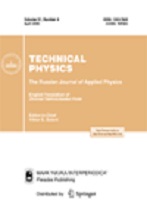|
This article is cited in 4 scientific papers (total in 4 papers)
Physical science of materials
Pseudogap, nanocrystals and electrical conductivity of doped silicate glass
G. Abdurakhmanovab, V. I. Shimanskic, B. L. Oksengendlerb, B. E. Umirzakova, A. N. Urokova
a Tashkent State Technical University
b National University of Uzbekistan, Tashkent
c Belarusian State University, Minsk
Abstract:
The ideas of pseudogap and nanocrystals have applied to mechanism of electrical conduction in silicate glass doped by oxides of transition metals (thick film resistors). Pseudogap is formed near the valence band of the glass due to diffusion of dopant atoms into the glass in calcination. Nanocrystals are generated in the glass in melting process and undergo structure transitions at high temperatures. This approach lets to explain the temperature dependence of conductivity of doped silicate glass from liquid helium up to 1100 K.
Keywords:
doped silicate glass, thick film resistor, electrical conductivity, diffusion, nanocrystal, impurity band, pseudogap.
Received: 12.05.2020
Revised: 08.08.2020
Accepted: 01.09.2020
Citation:
G. Abdurakhmanov, V. I. Shimanski, B. L. Oksengendler, B. E. Umirzakov, A. N. Urokov, “Pseudogap, nanocrystals and electrical conductivity of doped silicate glass”, Zhurnal Tekhnicheskoi Fiziki, 91:2 (2021), 281–286; Tech. Phys., 66:2 (2021), 269–274
Linking options:
https://www.mathnet.ru/eng/jtf5081 https://www.mathnet.ru/eng/jtf/v91/i2/p281
|


| Statistics & downloads: |
| Abstract page: | 81 | | Full-text PDF : | 29 |
|





 Contact us:
Contact us: Terms of Use
Terms of Use
 Registration to the website
Registration to the website Logotypes
Logotypes








 Citation in format
Citation in format 
